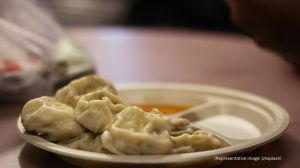Eid your heart out
Eid-Ul-Fitr is an occasion when the joys of reconciliation and eating are shared by one and all. After the long month of fasting, the Eid fe...

Eid-Ul-Fitr is an occasion when the joys of reconciliation and eating are shared by one and all. After the long month of fasting, the Eid feast comes as a grand finale welcomed by everyone. Besides, the Ramzan food too is something for which many fasting buffs wait eagerly.
Of course, one can’t ignore the costermongers kicking up a frenzied cacophony amidst the all-pervasive aroma of Ramzan dishes being prepared by restaurants, on pushcarts, and even the roadside squatters selling seekh kabab, qeeme ke samose and jalebis.
Shops neatly stacked with special Ramzan food like sewaiyan, khajla, pheni, kachalu and so on, hum with human activity around Delhi’s Jama Masjid, in Ballimaran, Chooriwala, Lal Kuan, Bara Hindu Rao, Kishan Ganj, Road Garan, Baradari, Beriwala Bagh, Zakir Nagar, Noor Nagar and Batla House.
Quite a lot of Eid’s culinary tradition actually comes from the Ramzan food. Notwithstanding the tenet of fasting that asks for less intake of food, on the day of Eid, people gorge and guzzle to their heart’s fill. On this day sweets of aromatic flavour are prepared, especially by traditional cooks of old.
Besides, in every nook and cranny of old Delhi, one can see sweet shops with extended counters encroaching on almost the entire width of narrow lanes and by-lanes. On the morning of Eid, the Baqarkhani of Sheerin Bhawan is an ideal sweet to have at breakfast!
At home, yet another delectable sweet dish happens to be sewaiyan, owing to which the festival has derived the name Meethi Eid. It goes without saying that the real taste of Eid-ul-Fitr lies in the hands of the housewife.
Just enter the lane of any Muslim area and you will be led by your nose owing to the wafting aroma of the mouth-watering murgh changezi, nargisi koftey, qorma, shami kawab, badshahi badam pasande, murgh jahangiri, chicken akbari, karhai gosht, tikka ajwaini, aatish Pasande, qeeme ki golian, qalmi bade and longcha kabab. Besides which, yakhni pulao is the housewife’s forte.
Thick meat broth or yakhni is prepared, in which whole spices are not added directly but wrapped and tied in muslin cloth (potli) and dipped into the broth. After the aroma of the spices has been absorbed by the meat and rice, the potli is taken out and the rice is cooked on a slow coal fire. Such perfection cannot be achieved by any five star chef but a housewife.
One should not miss on the roti aspect of this festival — a part of the great Mughlai tradition. The qeema naan is for all connoisseurs of minced meat. Roghani naan, most favoured on Eid, is bread that has butter or ghee spread over it. Besides, paneer aratha is stuffed bread that is prepared in many homes. But tandoori roti is the one that scores over all of them owing to its inimitable aroma and taste! Truly, Eid is a feast for the body and soul.



- 01
- 02
- 03
- 04
- 05




























